MAINLAND CHINA
China’s recent market closure is a very positive step but it remains one of the largest markets for illegal ivory and there has to be persuasive evidence of significantly reduced levels of illegal ivory being trafficked into the country before China can exit the NIAP process.



Is there a need to revise the existing NIAP or develop a new one? ‘YES‘

BEST PRACTICE
As the world’s largest destination for ivory, China’s recent action to close all legal ivory carving workshops and introduce tougher restrictions on the domestic ivory trade is commendable. Alternative training and livelihood support for ivory carvers is being provided, which is essential to dissuade people from being involved in illegal trade.
China has also revised its Wildlife Protection Law to prohibit the online sale of ivory and has made progress in strengthening law enforcement. Significantly, the Anti-Smuggling Bureau of China Customs has included wildlife crime as one of its top enforcement priorities and major seizures have resulted in high deterrent sentencing.
KEY CONCERNS
Implementing effective ivory market closure
More needs to be done to raise awareness of the domestic market closure and educate the public and traders alike about what it means, which is essential for it to be successful. The closure contains a worrying exemption for auctions of “cultural relics”, the exact scope of which has not been defined. It is potentially a major loophole that could be exploited by ivory traffickers.
Chinese nationals and businesses operating abroad
Chinese nationals are playing an increasing role in trafficking and consumption in neighbouring countries with well-established markets for ivory and other products from endangered species. A recent study showed that the number of Chinese-owned retail outlets selling ivory had increased significantly in Vietnam and Laos between 2013-16 and that the majority of buyers in Laos were visitors from China. Most of the ivory traded in China since 2008 has been traded illegally, outside the legal permitting scheme. Shuidong, in Guandong Province in southern China, is one of the most important hubs in Asia for trafficking ivory. EIA’s report The Shuidong Connection documents the role of a transnational Chinese-led criminal syndicate that has been trafficking ivory from Africa to Shuidong for over two decades. According to this syndicate, up to 80 per cent of tusks from poached elephants in Africa passes through Shuidong. With the diminishing profitability of trafficking ivory from savanna elephants in eastern Africa, this group switched to smuggling ivory from forest elephants in West and Central Africa, which sells for a higher price.
Tackling online trade
The main channels for illegal trade in China are social media platforms such as WeChat where closed user groups are established and operate with relative impunity. In general, law enforcement has so far been unable to penetrate this type of trading network effectively.
Stockpile management
There is no clear directive regarding the management of the existing ivory stockpile. Ivory stockpiles worldwide are a major source of ivory entering illegal trade as demonstrated by thefts from supposedly secure stockpiles in several countries, including China. A TRAFFIC study found that many ivory traders would prefer the Government to either repurchase their ivory stock or allow them to dispose of the stock through auctions; some even expect the ivory trade to reopen in the future. It is unclear whether the commercial stocks in the hands of the processors and retail sellers were ever inventoried, marked, catalogued or otherwise formally declared to the Government at the time the factories/shops were closed and if these stocks will be subject to periodic audits in the future to ensure they do not leak into illegal trade.
Lack of reporting to facilitate CITES decision-making
China is generally late in reporting ivory seizure data to ETIS and, with very few exceptions, only reports Customs data even though provincial law enforcement agencies are also making a considerable number of elephant product seizures. A number of these latter cases have been verified and entered into ETIS to augment the official figures, which have represented a diminishing number of cases over the past five years, leading to concerns about the completeness of the data submitted by China.
China has not submitted regular and adequate NIAP progress reports to the CITES Secretariat in accordance with its reporting obligations (only two reports have been submitted, for SC66 and SC67).
Outdated NIAP
China’s NIAP was developed in 2013 and has been overtaken by developments, including the market closure. It is now inadequate to deal with the key problems highlighted in this report and contains no indicators by which impact can be measured.
RECOMMENDATIONS FOR NIAP REVISION / PRIORITY AREAS OF IMPLEMENTATION:
- Issue a notification removing the exemption for cultural relics
- Increase awareness of the market closure throughout China, using traditional and social media, including the applicable penalties and the potentially positive impact on elephants
- Further strengthen law enforcement within China, including detection, investigation, prosecution and recovery of proceeds of crime by working closely with other source and transit countries/regions particularly Mozambique, Nigeria, Ethiopia, South Africa, Kenya, Tanzania, Malaysia, Singapore, Hong Kong, Japan and Vietnam
- Work closely with Vietnam, Laos, Myanmar and Cambodia to tackle consumption of ivory by Chinese nationals and improve collaboration with relevant African countries where processing operations for the China market appear to be growing
- Work closely with the EU to support closure of the EU ivory markets, in particular with EU countries implicated in exporting illegal ivory to China such as France, Italy, Belgium, the Netherlands, Portugal, Spain and the UK
- Devote specific resources to illegal trade through social media such as WeChat
- Conduct a transparent audit of the ivory stocks in Government (including seized stock) and private hands, then dispose of the seized stock to prevent leakage into the illegal trade
- Submit accurate and regular reports to CITES (e.g. for ETIS) in coordination with all relevant national and provincial enforcement agencies such as Customs and State Forestry police
Key indicators of NIAP progress
